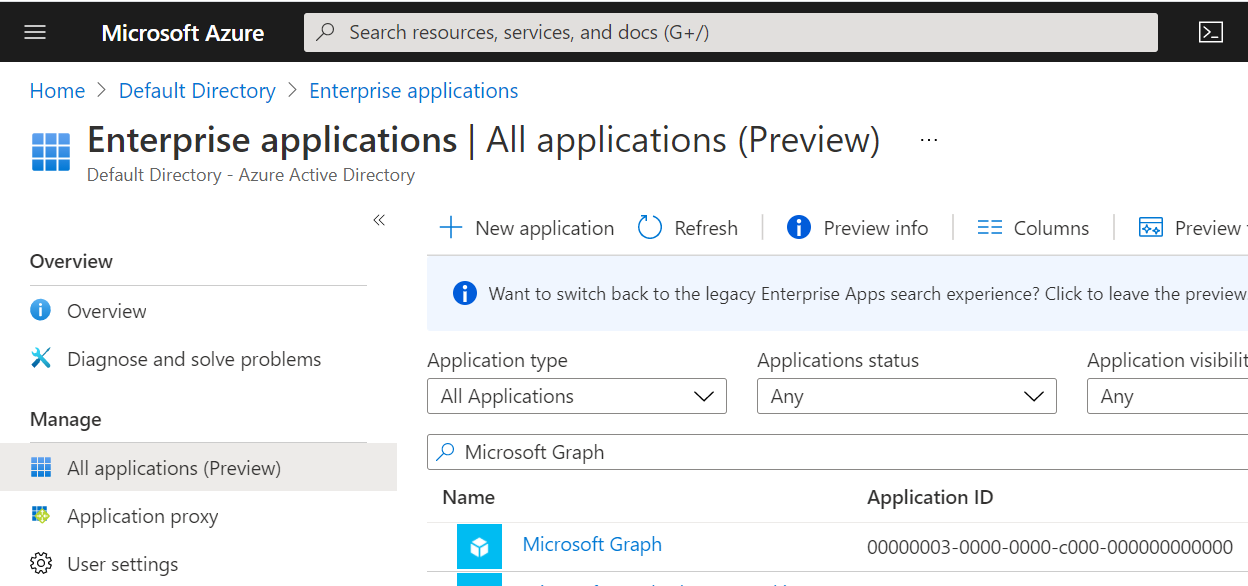Microsoft Graph API Terraform Data Source
Most Terraform examples that reference permissions from the Microsoft Graph use the GUIDs for the permissions. This makes it harder to write the Terraform config, as you have to look up the GUIDs for each permission. It also makes it harder to do code reviews where reviewers typically just believe the comment that describes what permission the GUID represents.
This is what the code for the required_resource_access for an azure ad application for k8s looks like using just the GUIDs (this is from a real example online):
required_resource_access { resource_app_id = "00000003-0000-0000-c000-000000000000" resource_access { id = "7ab1d382-f21e-4acd-a863-ba3e13f7da61" type = "Role" } resource_access { id = "06da0dbc-49e2-44d2-8312-53f166ab848a" type = "Scope" } resource_access { id = "e1fe6dd8-ba31-4d61-89e7-88639da4683d" type = "Scope" }}Your AD tenant should have enterprise applications (service principals) for the various Microsoft services including the Microsoft Graph.

You can look this up as a data source using Terraform as follows:
data "azuread_service_principal" "graph" { # graph api application id application_id = "00000003-0000-0000-c000-000000000000"}This will return a data source that has all of the oauth2 permissions and app roles for the Microsoft Graph. They can be awkward to work with, so I'll usually create a new object that maps the permission name to the permission id e.g.:
locals { graph = { application_id = data.azuread_service_principal.graph.application_id app_roles = {for app_role in data.azuread_service_principal.graph.app_roles : app_role.value => app_role.id} oauth2_permissions = {for oauth2_permission in data.azuread_service_principal.graph.oauth2_permissions : oauth2_permission.value => oauth2_permission.id} }}Using this, the example above would look like:
required_resource_access { resource_app_id = local.graph.application_id resource_access { id = local.graph.app_roles["Directory.Read.All"] type = "Role" } resource_access { id = local.graph.oauth2_permissions["Directory.Read.All"] type = "Scope" } resource_access { id = local.graph.oauth2_permissions["User.Read"] type = "Scope" }}tip
Note: this works for more than just the Microsoft Graph, you can use the same technique to look up app roles and permissions from any of your enterprise applications.